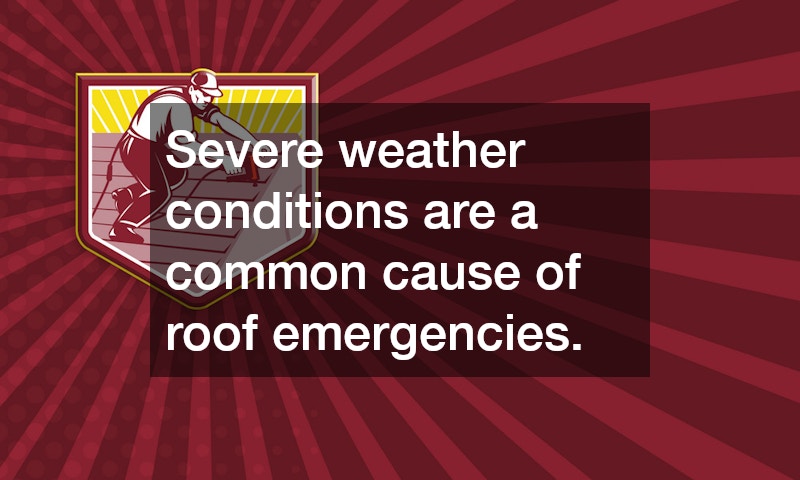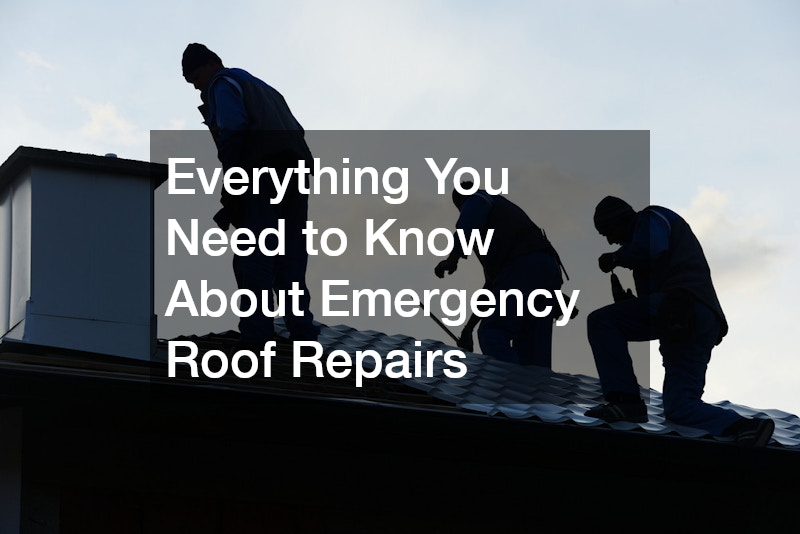Emergency roof repairs are crucial when unforeseen events cause damage to your roof. Storms, falling trees, or unexpected roof leaks often require immediate attention to prevent further damage. In many cases, delaying repairs can lead to increased costs and more extensive damage to your home.
Recognizing the signs of roof damage early can save you from a more serious situation. Signs include missing or damaged shingles, leaks, or noticeable sagging. Act promptly when you observe these indicators to avoid compromising the structural integrity of your roof.
The primary objective of emergency roof repairs is to protect the interior of your home. Completing timely repairs can prevent water infiltration, which often leads to mold and mildew development. Maintaining the health of your roof will also help safeguard your investment in your property.
Common Causes of Roof Emergencies
Severe weather conditions are a common cause of roof emergencies. High winds, heavy rain, and hail can lead to immediate and significant roof damage. It is important to inspect your roof regularly, especially after any severe weather event.
Falling debris, such as branches or even entire trees, can also cause emergency situations. The impact from these objects can create holes or fractures that compromise your roof’s functionality. Regularly trimming overhanging branches can minimize this risk.
Age and neglect are often the silent culprits behind emergency roof repairs. Over time, roofs deteriorate and become more susceptible to damage from everyday wear and tear. Regular maintenance and timely repairs can extend the lifespan of your roof significantly.
Immediate Steps to Take When Roof Emergencies Occur
When a roof emergency occurs, the first step is to ensure the safety of your family. Evacuate the affected areas of your home to eliminate the risk of injury from falling debris or further structural damage. Safety should always be your top priority.
After ensuring safety, attempt to minimize water damage by using buckets or tarps to cover leaks. It is also essential to document the damage with photographs for insurance purposes. Having detailed records can assist in the claims process.
Contact a professional roofing contractor as soon as possible to assess and repair the damage. Experienced contractors can provide a temporary fix until a more permanent solution is applied. Quick action can prevent minor issues from escalating into major problems.
How to Prevent Future Roof Emergencies
Regular roof maintenance is essential in preventing future emergencies. Scheduled inspections, at least twice a year, can help identify potential issues early. Addressing these issues promptly will reduce the likelihood of unexpected roof failures.
Investing in quality roofing materials can also prevent future problems. While the initial cost may be higher, high-quality materials offer durability and better protection against the elements. Long-term savings stem from reduced repair costs and extended roof lifespan.
Educate yourself about roof maintenance best practices and collaborate with your roofing professional to keep your roof in top condition. Develop a maintenance schedule that includes cleaning gutters, removing debris, and checking for signs of damage. This proactive approach can safeguard your home from future emergencies.
The Role of Insurance in Emergency Roof Repairs
Homeowners insurance often plays a crucial role in managing the cost of emergency roof repairs. Policies typically cover sudden and accidental damage, such as that caused by storms or falling objects. Understanding the specifics of your policy is vital to ensure you have adequate coverage.
Filing an insurance claim can be a complex process, so it is important to provide thorough documentation of the damage. Include photographs, repair estimates, and any correspondence with your contractor to support your claim. Prompt communication with your insurance provider can expedite the process.
Keep in mind that not all types of roof damage are covered by insurance policies. Regular maintenance is often the homeowner’s responsibility, and neglect can be grounds for claim denial. Familiarize yourself with your policy details to better manage your coverage options.


